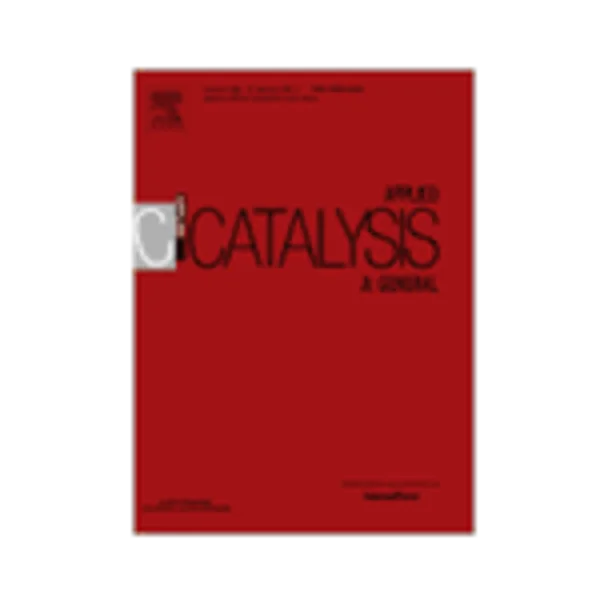-
bimodal n-doped p25-tio2/ac composite: preparation, characterization, physical stability, and synergistic adsorptive-solar photocatalytic removal of sulfamethazine
جزئیات بیشتر مقاله- تاریخ ارائه: 1392/07/24
- تاریخ انتشار در تی پی بین: 1392/07/24
- تعداد بازدید: 965
- تعداد پرسش و پاسخ ها: 0
- شماره تماس دبیرخانه رویداد: -
a novel nitrogen-doped p25-tio2 of bimodal structure with activated carbon supported (n-p25-tio2/ac) was synthesized via the modified sol–gel techniques. besides adding urea as n-source, the n-doping could also be induced through calcination under mixed nh3/n2 atmosphere. the composite was characterized using xrd, porosimetry, uv–vis spectrophotometry, ftir, xps, sem/edx and tem. the physical stability of the composite was examined through ultrasonication disruption, and the composite exhibited good physical stability. the synergistic effects of the adsorption-solar photocatalysis of sulfamethazine (smz) as exhibited by the composites were examined. the best performing bimodal composite was n-p25-tio2 (25 + 10)/ac, which comprised 25% of n-p25 and 10% n-tio2 (sol) by weight composition (wt%). the maximum adsorption capacity (smax) for the n-p25-tio2 (25 + 10)/ac, at ph 3.0, 6.0 and 10.0 was 183 ± 3, 194 ± 3, and 103 ± 2 mg g−1, respectively. the effects of the total loading of n-doped titania, sol–gel synthesis technique, weight distribution of n-p25 and n-tio2 (sol), composite dosage, light wavelength spectrum and solution ph on the photocatalytic degradation (pcd) of smz were investigated. the n-p25-tio2 (25 + 10)/ac composite exhibited enhanced pcd efficiency under solar irradiation with a pseudo first-order rate constant (kapp) of 0.48 h−1, as compared to other types of bimodal composites because its higher n-p25 content led to a greater photocatalytic activity.
مقالات جدیدترین رویدادها
-
استفاده از تحلیل اهمیت-عملکرد در ارائه الگوی مدیریت خلاقیت سازمانی و ارائه راهکار جهت بهبود
-
بررسی تاثیر ارزش وجوه نقد مازاد بر ساختار سرمایه شرکت های پذیرفته شده در بورس اوراق بهادار تهران
-
بررسی تأثیر سطح افشای ریسک بر قرارداد بدهی شرکت های پذیرفته شده در بورس اوراق بهادار تهران
-
بررسی تأثیر رتبه بندی اعتباری مبتنی بر مدل امتیاز بازار نوظهور بر نقد شوندگی سهام با تأکید بر خصوصی سازی شرکت ها
-
تأثیر آمیخته بازاریابی پوشاک ایرانی بر تصویر ذهنی مشتری پوشاک ایرانی (هاکوپیان)
-
روش اجرای پل بتنی دال و تیر مطالعه موردی مراحل اجرای پل ارتباطی سرریز سد کرخه
-
شبیه سازی نحوه پخش و انتشار ترکیبات آلی فرار خروجی از فلرهای پالایشگاه های پارس جنوبی با نرم افزار aermod
-
بررسی و مقایسه رویکردهای یادگیری مورد استفاده اساتید در دروس معماری به منظور بهبود فرایند آموزش در معماری
-
ارزیابی و سنجش میزان عزت نفس و پیشرفت تحصیلی متاثر از برنامه های آموزشی مختلف در مدارس شهرستان پیرانشهر
-
راهکارهای افزایش بهبود جمع و تفریق با کمک بازی در یکی از دانش اموزان کلاس دوم ابتدایی مدرسه الزهرا
مقالات جدیدترین ژورنال ها
-
مدیریت و بررسی افسردگی دانش آموزان دختر مقطع متوسطه دوم در دروان کرونا در شهرستان دزفول
-
مدیریت و بررسی خرد سیاسی در اندیشه ی فردوسی در ادب ایران
-
واکاوی و مدیریت توصیفی قلمدان(جاکلیدی)ضریح در موزه آستان قدس رضوی
-
بررسی تاثیر خلاقیت، دانش و انگیزه کارکنان بر پیشنهادات نوآورانه کارکنان ( مورد مطالعه: هتل های 3 و 4 ستاره استان کرمان)
-
بررسی تاثیر کیفیت سیستم های اطلاعاتی بر تصمیم گیری موفق در شرکتهای تولیدی استان اصفهان (مورد مطالعه: مدیران شرکتهای تولیدی استان اصفهان)
-
پیش بینی دلزدگی زناشویی بر مبنای ذهن آگاهی، بهزیستی روانشناختی و انعطاف پذیری شناختی زوجین مراجعه کننده به مراکز مشاوره
-
بررسی و نقد ادله کنترل جمعیت از دیدگاه فتاوای فقهای معاصر
-
بررسی ارتباطات اثربخش و سکوت سازمانی مطالعه موردی: سازمان آب و فاضلاب شهری خراسان جنوبی
-
بررسی رابطه بین اقدامات مدیریت منابع انسانی با عملکرد سازمانی با توجه به نقش میانجی مدیریت دانش وتعدیلی فرهنگ سازمانی کارکنان شبکه بهداشت و درمان در استان گلستان
-
بازآفرینی فرهنگی شهر با تکیه بر خلق فضای پاتوق شهری نمونه موردی: شهر اردبیل




سوال خود را در مورد این مقاله مطرح نمایید :